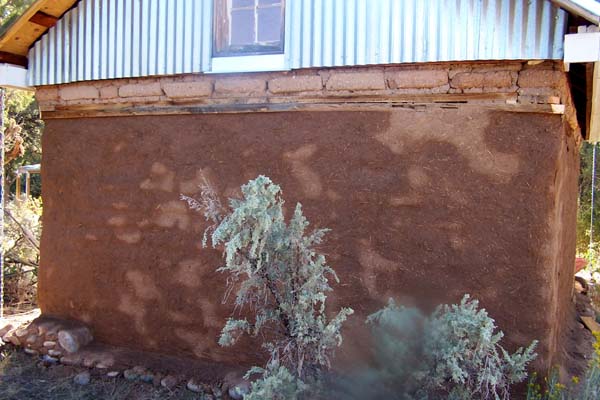A view of the adobe wall infill repair coat as it dries. We made this coat a thick earthen plaster, wet cob mix with plenty of straw in order to fill in the deep ruts in the worn adobe bricks and mud mortar. The walls had taken a beating over the years due to not having long enough roof overhangs which exposed it to the elements, specifically the heavy monsoon rains in New Mexico.
For a bit of back story on this 300 ft. casita – it had been built sometime in the late 1970’s in this small northern New Mexico town and was an experimental project of the owner. He made his own adobe bricks, we believe, wanted to try his hand at adobe construction and this adobe brick cabin was the result of those efforts.
As we have mentioned much in this particular gallery section, the roof overhangs are not sufficient for an earthen building, especially one that was not protected by a water proofed cement or lime stucco. This building only had an earthen plaster applied on the exterior, which over time, as will happen, melted off and wore down to the exposed adobe bricks seen here.
It must be noted that in some cases, home owners want to have the look of worn adobe bricks as they soften up and hold up relatively well. However, over time-especially unstablized adobe bricks will wear down to the extent the overall structure is in danger of collapsing. This structure was not anywhere near collapse, but lack of protection for many years to come, would eventually cause big problems.
The infill mud coat, a modified cob mixture we applied with plenty of straw is seen drying in this image. After this infill coat was secure and dry we then applied an earthen mix fortified by a strengthened blend we hope will hold up a bit longer than a basic earthen plaster.


